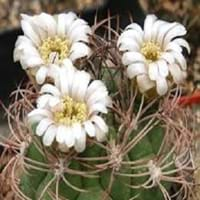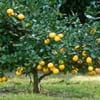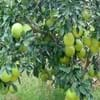Life Span
Perennial
Perennial
Origin
Mexico, Central America
South America
Types
Reinikie, Dade, Pike, Suebelle and Golden
Climate
Gymnocalycium alboareolatum , Gymnocalycium amerhauseri , Gymnocalycium andreae
Habitat
Tropical Highlands
Desert, Semi desert
USDA Hardiness Zone
8-11
9-12
Sunset Zone
H1, H2, 14, 15, 16, 17, 18, 19, 20, 21, 22, 23, 24
13,21,22,23,24
Habit
Oval or Rounded
Upright/Erect
Flower Color
Light Green, Ivory
creamy white, Light Pink, Not Available, Pink
Flower Color Modifier
Bicolor
Not Available
Fruit Color
Light Yellow, Yellow green, Light Green
Pink
Leaf Color in Spring
Green, Dark Green
Green, Not Available
Leaf Color in Summer
Green, Dark Green
Green
Leaf Color in Fall
Green, Dark Green
Green
Leaf Color in Winter
Light Green
Green
Leaf Shape
Alternate
Not Applicable
Plant Season
Spring, Summer, Fall, Winter
All year
Sunlight
Full Sun
Full Sun, Part sun, Partial shade, Partial Sun
Type of Soil
Loam, Sand
Sand, Sandy
The pH of Soil
Acidic, Neutral
Neutral
Soil Drainage
Well drained
Sandy
Bloom Time
Winter, Late Winter
All year
Tolerances
Drought
Dry Conditions, Dry soil, Full Sun, Heat Tolerance
Where to Plant?
Ground
Ground, Pot
How to Plant?
Budding, Grafting, Seedlings, Vegetative
Offsets
Plant Maintenance
Medium
Medium
Watering Requirements
Do not water frequently, Needs more water during establishment, Water during dry weather
Do not water excessively
In Summer
Lots of watering
Lots of watering
In Spring
Moderate
Moderate
In Winter
Average Water
Average Water
Soil pH
Acidic, Neutral
Neutral
Soil Type
Loam, Sand
Sandy
Soil Drainage Capacity
Well drained
Dry
Sun Exposure
Full Sun
Full Sun, Part sun, Partial Sun
Pruning
Remove damaged leaves, Remove dead branches, Remove dead leaves
No need to prune
Fertilizers
All-Purpose Liquid Fertilizer
All-Purpose Liquid Fertilizer, can go long without fertilizers
Pests and Diseases
Red blotch
Mealy bugs, Root rot
Plant Tolerance
Drought
Dry soil, Full Sun, Heat Tolerance
Flowers
Insignificant
Showy
Flower Petal Number
Single
Single
Fragrant Flower
Not Available
No
Foliage Texture
Medium
Bold
Foliage Sheen
Matte
Matte
Attracts
Birds
Ants, Mealybugs
Allergy
drowsiness
Unknown
Aesthetic Uses
Not Used For Aesthetic Purpose
Beautification, Cottage Garden, Ornamental use
Beauty Benefits
Not Available
No Beauty Benefits
Environmental Uses
Air purification
Air purification, Food for animals, Food for birds, Food for insects
Medicinal Uses
Anti-carcinogenic effects, Colon Cancer
No Medicinal Use
Part of Plant Used
Fruits, Pulp, Seeds
Bark, Fruits
Other Uses
Used As Food
Decoration Purposes
Used As Indoor Plant
No
Yes
Used As Outdoor Plant
Yes
Yes
Garden Design
Edible, Fruit / Fruit Tree, Shade Trees, Tropical
Container, Houseplant, Rock Garden, Showy Tree
Botanical Name
CASIMIROA edulis
GYMNOCALYCIUM
Common Name
White Sapote
Chin Cactus
In Hindi
White Sapote
Gymnocalycium
In German
White Sapote
Gymnocalycium
In French
Sapote blanche
Gymnocalycium
In Spanish
White Sapote
Gymnocalycium
In Greek
White Sapote
Gymnocalycium
In Portuguese
White Sapote
Gymnocalycium
In Polish
White Sapote
Gymnocalycium
In Latin
White Sapote
Gymnocalycium
Phylum
Magnoliophyta
Magnoliophyta
Class
Magnoliopsida
Magnoliopsida
Order
Sapindales
Caryophyllales
Family
Rutaceae
Cactaceae
Genus
Casimiroa
Gymnocalycium
Clade
Angiosperms, Eudicots, Rosids
Angiosperms, Eudicots
Tribe
Not Available
Trichocereeae
Subfamily
Not Applicable
Cactoideae
Properties of White Sapote and Gymnocalycium
Wondering what are the properties of White Sapote and Gymnocalycium? We provide you with everything About White Sapote and Gymnocalycium. White Sapote doesn't have thorns and Gymnocalycium doesn't have thorns. Also White Sapote does not have fragrant flowers. White Sapote has allergic reactions like drowsiness and Gymnocalycium has allergic reactions like drowsiness. Compare all the properties and characteristics of these two plants. Find out which of these plant can be used as indoor plant. If you are interested to decorate your house and garden, find out aesthetic uses, compare them and select the plant which will beautify your surrounding. Along with beautification, try comparing medicinal and edible uses of White Sapote and Gymnocalycium and you can choose the plant having best and most benefits.
Season and Care of White Sapote and Gymnocalycium
Season and care of White Sapote and Gymnocalycium is important to know. While considering everything about White Sapote and Gymnocalycium Care, growing season is an essential factor. White Sapote season is Spring, Summer, Fall and Winter and Gymnocalycium season is Spring, Summer, Fall and Winter. The type of soil for White Sapote is Loam, Sand and for Gymnocalycium is Sand, Sandy while the PH of soil for White Sapote is Acidic, Neutral and for Gymnocalycium is Neutral.
White Sapote and Gymnocalycium Physical Information
White Sapote and Gymnocalycium physical information is very important for comparison. White Sapote height is 610.00 cm and width 760.00 cm whereas Gymnocalycium height is 12.50 cm and width 8.00 cm. The color specification of White Sapote and Gymnocalycium are as follows:
White Sapote flower color: Light Green and Ivory
White Sapote leaf color: Green and Dark Green
Gymnocalycium flower color: creamy white, Light Pink, Not Available and Pink
- Gymnocalycium leaf color: Green and Not Available
Care of White Sapote and Gymnocalycium
Care of White Sapote and Gymnocalycium include pruning, fertilizers, watering etc. White Sapote pruning is done Remove damaged leaves, Remove dead branches and Remove dead leaves and Gymnocalycium pruning is done No need to prune. In summer White Sapote needs Lots of watering and in winter, it needs Average Water. Whereas, in summer Gymnocalycium needs Lots of watering and in winter, it needs Average Water.





